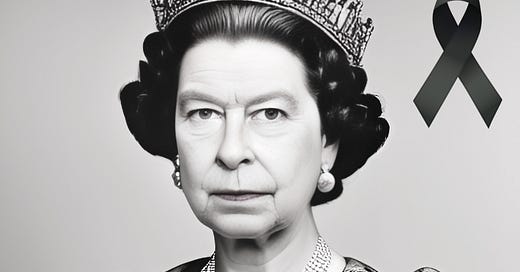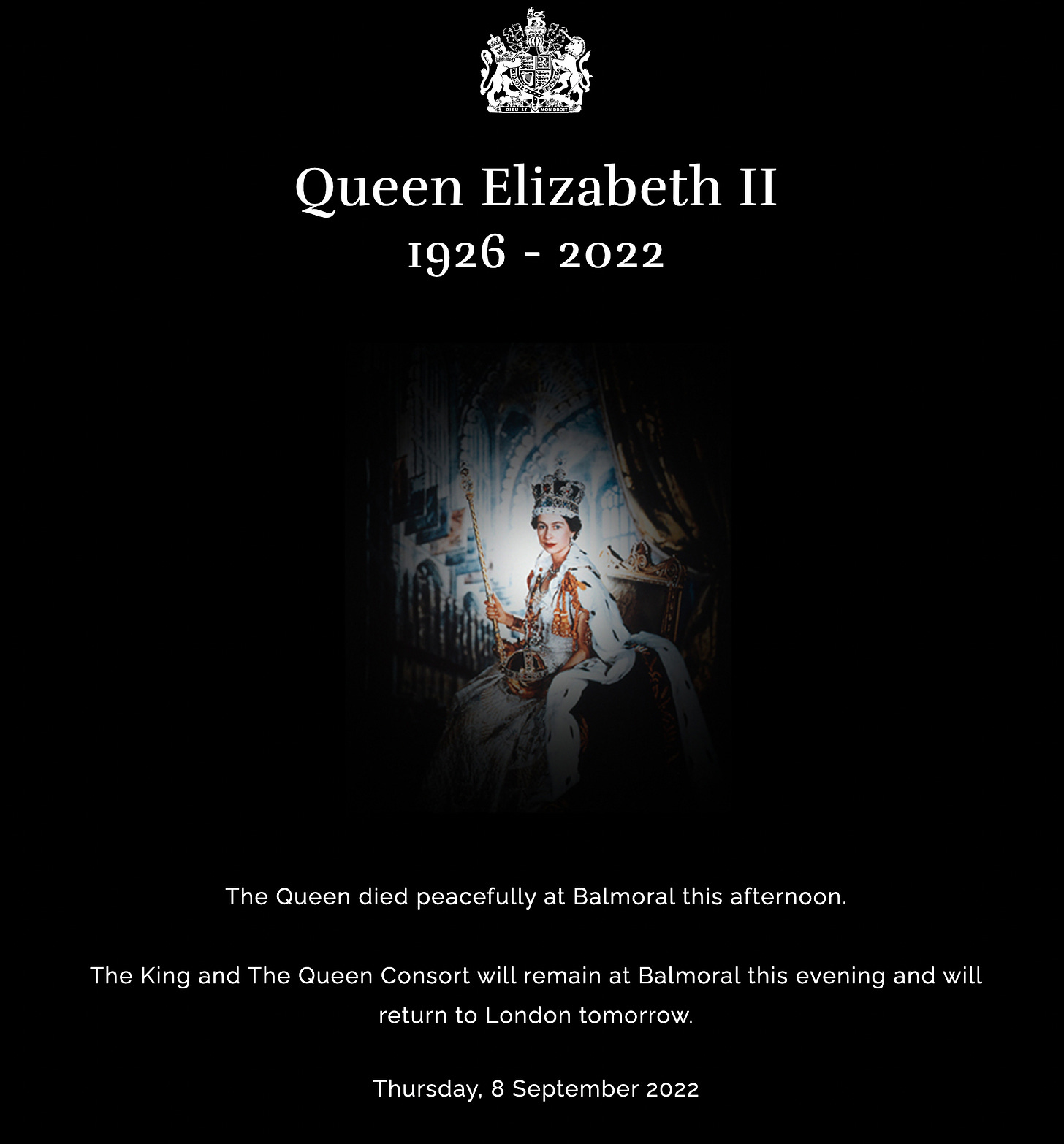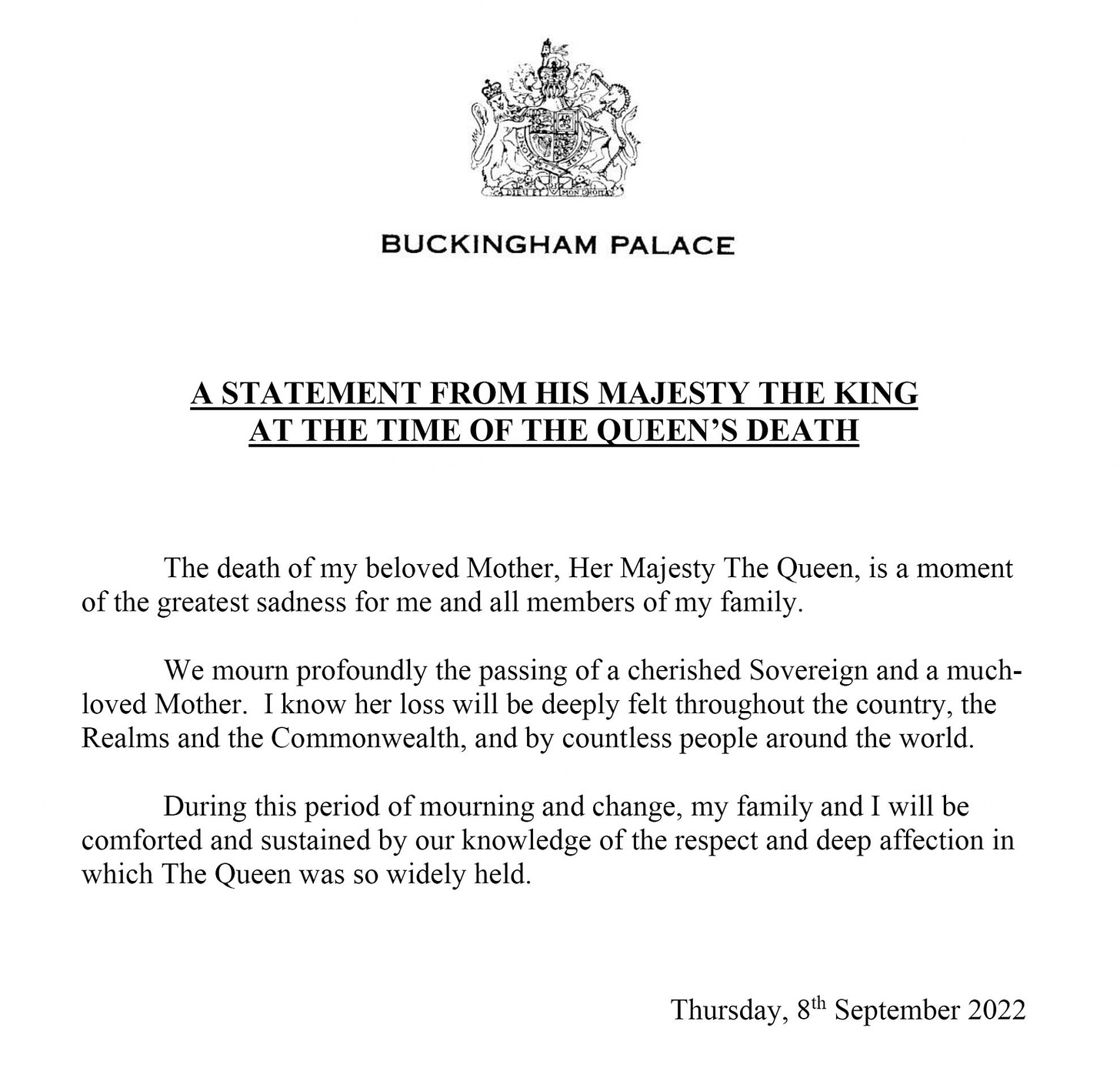The Passing of an Icon: Why We Will All Be Mourning Queen Elizabeth II's Death
May She Rest in Peace
With a heavy heart, we must say goodbye to one of the most iconic figures of our time: Queen Elizabeth II. The world has lost a great leader, and she will be sorely missed.
But what made her such an exemplary monarch?
A Life of Service
Queen Elizabeth II was born on April 21st, 1926, to parents who would one day become King George VI and Queen Elizabeth. She was always destined for greatness but never let it get to her head. Even from a young age, she was devoted to her duty and committed to her role as heir to the throne.
She was 25 years old when she ascended to the throne after her father’s death in 1952, and she has been serving her country ever since. In 70 years on the throne, she has seen 15 Prime Ministers come and go and has represented Britain with distinction on countless occasions.
Many things made Queen Elizabeth II an excellent monarch. First and foremost, she symbolized stability when the world was undergoing massive changes. She also championed causes that were important to her, such as environmentalism and animal welfare. And last but not least, she always conducted herself with grace and dignity, setting an example for all to follow.
An Icon for the Ages
Queen Elizabeth II is not only a significant figure in British history but an international icon. Her calm nature in the face of adversity has endeared her to people worldwide. Her commitment to public service is an example we can all learn from.
She has seen Britain through some darkest days, including the battle against Nazi Germany in World War II. She has guided the country through periods of immense social change. She has also maintained strong relationships with other world leaders, which has helped Britain punch above its weight on the global stage.
Queen Elizabeth II’s death will be mourned by people worldwide. She was an extraordinary woman who dedicated her life to her people and will be missed by all.
D-Day and Operation London Bridge Are on Their way
Operation London Bridge is the codename for the Royal Family and the British Government’s plan for the Queen’s Death.
After the queen’s death, most of Britain’s most senior ministers and officials were informed through a “call cascade.” The queen’s private secretary informed the Prime Minister, who told the Privy Council Office. The Privy Council coordinates government work on behalf of the monarch.
The day of her death is known as “D-Day.” Each day leading up to the burial will be known as “D+1,” “D+2,” and so on, continuing until the service begins.
Three main events will happen during the funeral: a gun carriage procession, the lying in state, and a service at Westminster Hall.
The gun carriage procession will take place from Buckingham Palace to Westminster Hall. The route is about one and a half miles long and will be lined with military personnel and public members.
The funeral service will be held at Westminster Abbey, where many other British monarchs have been buried. The Dean of Westminster will conduct the service and include readings, prayers, and hymns.
The funeral itself will be a sad affair. Still, it is also an opportunity for the British people to come together and celebrate the life of one of their most beloved monarchs.
Queen Elizabeth II will be greatly missed, but her legacy will live forever.
The History of Royal Succession in England
The English monarchy has a long and complex history, dating back to the days of the Anglo-Saxons. The Act of Settlement established the current system of royal succession in 1701, which determined that the throne would pass to the Electress Sophia of Hanover and her descendants.
Under the act, the monarch must be a Protestant, and no Catholic is allowed to ascend to the throne. This rule was implemented because of the fear that a Catholic monarch would give preferential treatment to Catholics over Protestants.
The act also stipulates that if there are no eligible heirs in the direct line of succession, the throne will pass to the next eligible Protestant relative.
The Act of Settlement has been amended several times over the years, most recently in 2013 when the succession to the Crown Act was passed. This act removed the rule that preference must be given to male heirs over female heirs.
Now, the monarch is succeeded by their child, regardless of gender. If the monarch doesn’t have any children, then they are followed by their nearest relative in the line of succession.
King Charles III
Queen Elizabeth II’s death meant that her son, Prince Charles became the new king. He will be the first monarch to take the name Charles III, as the last King Charles died in 1685.
Prince Charles is 73 years old and has been heir to the throne for longer than any other prince in British history. He is married to Camilla Parker Bowles and has two children, Prince William, and Prince Harry.
Charles is a controversial figure, and many people have mixed feelings about him becoming king. Some believe he is too old and out of touch with modern Britain, while others think he will be a great monarch who will bring much-needed change to the country.
Only time will tell what kind of king Charles III will be, but one thing is for sure: he has big shoes to fill. Queen Elizabeth II’s Death and the Future of the Royal Family
Prince William is now first in line for the throne, followed by his children, George, Charlotte, and Louis. Prince Harry is now fifth in line to the throne.
We will likely see some changes in the royal family in the future. Prince William has said that he wants his children to have a more regular upbringing than he did, and they may spend less time in the public eye than their predecessors.
We may also see changes to the way that the monarchy is funded. The royal family has recently been increasingly pressured to be more financially transparent. We may see some changes in this area in the years to come.
Queen Elizabeth II’s death will mark the end of an era, but it is also the beginning of a new one. She will always be remembered as one of the greatest monarchs in history.
Her legacy will live on through her family. The British people and the world will deeply miss her.
My sincere condolences to the royal family and the British people.
May Queen Elizabeth II rest in peace.
What is your favorite memory of Queen Elizabeth II? What do you think about the passing of Queen Elizabeth II? Please share it in the comments below!
I published this story first on Medium.com.
© Alejandro Betancourt, 2022. All Rights Reserved.







